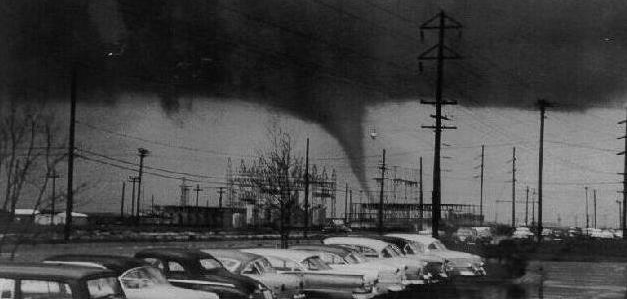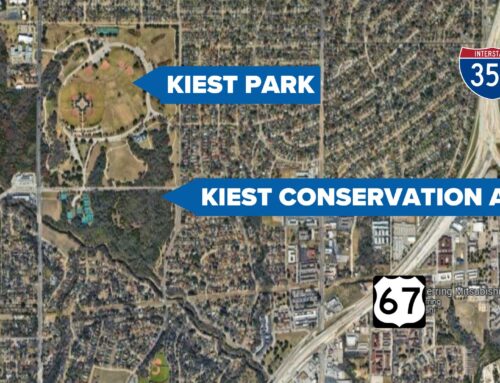The tornado that hit Dallas Sunday was an F3, which means winds of 158-206 miles per hour, heavy roof damage, trees uprooted and cars thrown around in the wind.
A tornado of similar force hit Oak Cliff on the afternoon of Tuesday, April 2, 1957, and it changed the science on tornadoes.
It was the deadliest tornado in Dallas’ history, killing 10 people, including three children from one family. It also injured 200 people and caused about $4 million in damages (about $36.8 million in 2019 dollars).
It started at South Polk Street and streaked through Winnetka Heights and West Dallas. It traveled 16 miles in about 40 minutes.
“At the time it was one of the most photographed tornadoes,” says Dallas historian Mark Doty.
Photographs of the tornado helped lead research in understanding and forecasting tornados, he says.
About 125 people photographed the slow-moving tornado, and others captured video footage.
Old theories held that debris from a tornado was sucked into the funnel and spit out the top. Photos from the ’57 twister disproved that, showing that things were lifted off the ground along the edges of the cyclone.
Evidence from the tornado contributed to the formation of the Fujita-Pearson Scale, which measures the intensity of tornadoes, beginning in 1971. The Oak Cliff tornado retrospectively was rated an F-3.






